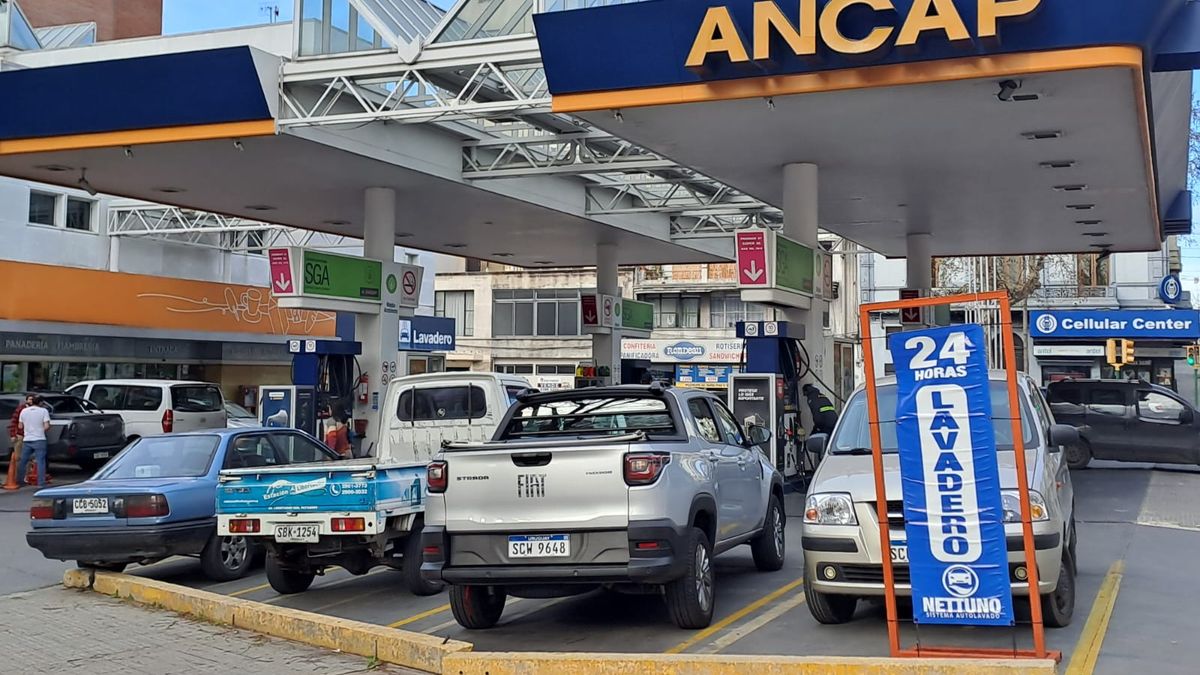He Executive power published a decree at the end of January where a new component is added to the calculation of oil prices. fuel that determines the government, the decision of the Ministry of Industry, Energy and Mining (Miem) corresponds to considering the financial costs of the distributors.
On January 30, Miem published the Decree 43/024 with the signature of the president Luis Lacalle Pou to communicate the addition of a new index when calculating the price of fuel, a calculation carried out by the Energy and Water Services Regulatory Unit (Ursea).
The objective of this aggregate is to take into account the financial cost of the working capital of fuel distributors. This arises from the seven-day delay that occurs between the wholesale distributors – who pay in cash for the supply of Ancap- and collection from retail distributors.
Among the wholesale distributors in Uruguay are found the Uruguayan Distributor of Fuels SA (Ducsa) – which belongs to Ancap -, Axion and Disa.
The decree highlights as “pertinent” the addition to the calculation of fuel prices of the Temporary Intermediate Maximum Price (PMIT), which corresponds to the sales made by wholesale distributors to retailers, among which are service stations and other points of sale.
How is fuel calculated in Uruguay?
Before this addition, which has not yet been applied, the price of fuel in Uruguay It is determined monthly from a tool called Import Parity Prices (PPI)and is applied to the import of petroleum products as a reference price for the Urseawhich then Executive power used to set final rates.
The objective of this methodology, which has been applied since 2002, but underwent modifications in 2010 and 2017, is to make the costs of fuels (gasoline, diesel, fuel oil, liquefied petroleum gas or supergas, and propane) transparent to final consumers. ; especially considering that the import and production of petroleum derivatives in the country is less than Ancap.
In this way, and based on the PPI—in addition to other political and economic considerations—the government establishes the Ancap Plant Price (PEP); That is, the value that, without taxes, consists of the net income that the company receives from its sales.
How does the PPI work?
The PPI considers different costs of services related to the import of fuels in Uruguay, to then set a reference price which can be adjusted according to other business financial needs or public policy objectives indicated by the Executive Branch.
The calculation is not limited to the short term – as it includes investment costs in addition to operating and maintenance costs – and attempts to reflect the activity of an importer and the efficiency costs that it would eventually have to assume to access products of similar quality. those required in the domestic market.
The elements within the PPI
The methodology considers these elements when making the calculation:
- he FOB value (Free on Board) in a reference market, that is, the value of fuels in the port of origin, which varies according to each product;
- the total costs, expenses and fees necessary to place the product at the exit of the main dispatch plants;
- a remuneration for the available logistics infrastructure (port facilities, storage, pipeline, among others);
- the current tax regime (consular fee, tax commission BROUflammable rate, VATIMESI, etc.);
- agreements with fuel distributors;
- bonuses recognized at service stations;
- average freight values from wholesale distribution centers to the final consumer reported by Ancap;
- and the cost of biofuels (bioethanol and biodiesel) that Ancap must incorporate into gasoline and diesel according to Law 18,195.
It should be noted that the costs with the greatest impact on the price are external and cannot be modified by Ancap and are volatile as they depend on variables that are determined in international markets. This causes prices to increase due to the global situation.
The impact of the exchange rate is also fundamental, since the price of fuel is calculated in local currency.
Source: Ambito




